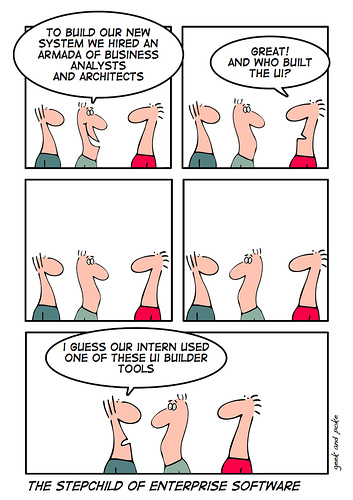|
|
|
October 24th, 2012 by Miki Saxon
 Of all the high profile entrepreneurs who have built wildly successful companies my favorite is Tony Hsieh. Of all the high profile entrepreneurs who have built wildly successful companies my favorite is Tony Hsieh.
Hsieh is amazing from his MAP and the culture it engenders to the lengths he’s willing to go to propagate and share it—which includes renovating an entire city.
Hsieh is one of those increasingly rare people with an abundance of common sense who eschews ideology and focuses on doing real good in his community well beyond what’s necessary.
A healthy take on doing good by doing well in a very capitalistic way.
Hsieh calls this effort the Downtown Project, a $350 million urban experiment to build “the most community-focused large city in the world” in downtown Las Vegas.
The $350 million breaks out as follows, $200 million invested in land and buildings; $50 million for small businesses; $50 million for tech startups/companies and $50 million to be used for education.
Typically companies like Zappos build spectacular campuses offering their employees all the amenities in their own little world, but that approach actually went against parts of the Zappos culture, which promotes unstructured interactions among the staff.
Hsieh took that attitude and created a different vision for the new campus.
He leased the former City Hall — smack in the middle of downtown Vegas — for 15 years. Then he got to thinking: If he was going to move at least 1,200 employees, why not make it possible for them to live nearby? And if they could live nearby, why not create an urban community aligned with the culture of Zappos, which encourages the kind of “serendipitous interactions” that happen in offices without walls? As Zach Ware, Hsieh’s right-hand man in the move, put it, “We wanted the new campus to benefit from interaction with downtown, and downtown to benefit from interaction with Zappos.”
In typical Hsieh fashion the effort is summed up in a way that reflects what is really needed from today’s business leaders.
“Every factory in the world is doing everything to maximize R.O.I. We’re doing everything to maximize R.O.C.—Return On Community.” –Tony Hsieh.
Flickr image credit: Charlie Llewellin
Tags: ideology, management approach, Richard Branson, ROC, Tony Hsieh
Posted in Culture, Innovation, Leadership |
No Comments »
Sphere: Related Content
*/?>
August 16th, 2012 by Miki Saxon
 Back in the 1980s and before and maybe after recruiter was the entry point for a career in HR. Back in the 1980s and before and maybe after recruiter was the entry point for a career in HR.
As you may imagine, this contributed little-to-nothing to that all-important first impression on candidates.
What was ignored so often back then (and still is) is that whoever is the first direct contact with the outside world, whether customers, vendors or candidates, IS the company.
Internal recruiters, customer service, tech support, receptionists, etc., create that all-important first impression—think Zappos—the impression that lives forever in the back of the mind no matter what happens after.
Computers and mobile haven’t changed this, only now it is often your UI that creates that oh-so-important first impression.
The thing that entrepreneurs, especially young ones, need to understand is that unless their target audience is limited to the tech-savvy or nerds who rate learning new programs right up there with chocolate and visits to the amusement park a UI that doesn’t provide obvious labels and simple instructions is going to turn off a large number of prospective customers.
No matter how sophisticated your app, website or program that sophistication needs to be totally transparent.
People are creatures of habit; many hate change most have to be dragged kicking and screaming into the new whatever.
Simplicity, honesty and transparency go a long way to eliminating that resistance as well as to creating a great first impression.
That’s why first contact points aren’t always the best place to have a newbie learning—not so much the job, but the importance of external players and first impressions.
SUBMIT YOUR STORY
Be the Thursday feature – Entrepreneurs: [your company name]
Share the story of your startup today.
Send it along with your contact information and I’ll be in touch.
Questions? Email or call me at 360.335.8054 Pacific time.
Flickr image credit: Geek and Poke
Tags: authenticity, entrepreneur, transparency, trust
Posted in Entrepreneurs |
No Comments »
Sphere: Related Content
*/?>
July 26th, 2012 by Miki Saxon
 Most people know the value of real vacations—the kind where you totally disconnect from work—at least hypothetically. Most people know the value of real vacations—the kind where you totally disconnect from work—at least hypothetically.
Workforce experts and top managers understand the benefits.
Today isn’t an effort to list or extol the benefits of real vacations in yet another effort to convince you.
Instead, I want to introduce you to FullContact, a company that took a page from Tony Hsieh’s management book and applied it to vacations.
As most of you know, Zappos offers a pays people to not work for them.
Zappos offers to pay new employees a $2,000 bonus, plus time worked, to quit after completing orientation.
FullContact takes a similar approach by paying for the actual vacation.
Here’s how it works: once per year, we give each employee $7500 to go on vacation.
There are a few rules:
- You have to go on vacation, or you don’t get the money.
- You must disconnect.
- You can’t work while on vacation.
While many startups may not be in a position to pay for vacations, every company can provide time off and enforce rules two and three.
Read CEO Bart Lorang’s rationale and think about how to get your own people to step back, disconnect and recharge.
You won’t regret it.
SUBMIT YOUR STORY
Be the Thursday feature – Entrepreneurs: [your company name]
Share the story of your startup today.
Send it along with your contact information and I’ll be in touch.
Questions? Email or call me at 360.335.8054 Pacific time.
Flickr image credit: FullContact
Tags: entrepreneur, Full Contact, unwire, vacation
Posted in Entrepreneurs |
No Comments »
Sphere: Related Content
*/?>
April 27th, 2012 by Miki Saxon
A Friday series exploring Startups and the people who make them go. Read all If the Shoe Fits posts here
 Why is it that so many who offer good professional commentary ruin it by presenting it as black and white? Why is it that so many who offer good professional commentary ruin it by presenting it as black and white?
Nothing that involves humans is black and white.
If I describe a manager who screams, rants, insults, and belittles his people I doubt that you would want to emulate his style.
What happens when I tell you his name is Steve Jobs?
Nothing is black and white.
A recent Inc. article listed 8 Core Beliefs of Extraordinary Bosses, they are
- Business is an ecosystem, not a battlefield.
- A company is a community, not a machine.
- Management is service, not control.
- My employees are my peers, not my children.
- Motivation comes from vision, not from fear.
- Change equals growth, not pain.
- Technology offers empowerment, not automation.
- Work should be fun, not mere toil.
There’s nothing inherently wrong with the list, the concepts are good, but there is a lot wrong with the accompanying commentary starting with the adjectives.
According to the article bosses who don’t embrace these eight in the way described are average bosses.
More accurately, the descriptions of the actions and attitudes attributed to the “average boss” belong, by and large, to the toxic boss category.
Based on the categories Jobs is average, by the descriptions he’s toxic.
Tony Hsieh comes to mind as fitting the description of ‘extraordinary’, although I doubt you would hear him describe himself that way.
Apple and Zappos are both highly successful.
The take-away is nothing is black and white; things that look great at first glance need to be thought through before you embrace them.
Option Sanity™ helps think things through.
Come visit Option Sanity for an easy-to-understand, simple-to-implement stock allocation system. It’s so easy a CEO can do it.
Warning.
Do not attempt to use Option Sanity™ without a strong commitment to business planning, financial controls, honesty, ethics, and “doing the right thing.”
Use only as directed.
Users of Option Sanity may experience sudden increases in team cohesion and worker satisfaction. In cases where team productivity, retention and company success is greater than typical, expect media interest and invitations as keynote speaker.
Flickr image credit: HikingArtist
Tags: entrepreneur, management approach, Steve Jobs, Tony Hsieh
Posted in If the Shoe Fits, Personal Growth |
No Comments »
Sphere: Related Content
*/?>
March 19th, 2012 by Miki Saxon
A study by Bain & Company, published in 2001, showed that acquiring a new customer can cost six to seven times more than retaining an existing customer, and that increasing customer retention rates by 5% boosts profits by 25% to 95%.
 Why is it that so many managers ignore the connection between happy employees and happy customers? Why is it that so many managers ignore the connection between happy employees and happy customers?
Why do they insist on putting the cart before the horse and only invest in their people after revenues increase?
In yet another study researchers again found that customer retention is a function of great customer service, in other words, happy employees result in more loyal customers who spend more.
Zappos may be the poster child of the happy workforce, but there are many ways of achieving the same happy results.
2006, American Express, the credit card issuer, started an internal program that involved training and incentivizing its staff to get customers more engaged. The company transformed its traditional service call by getting rid of scripts and taking customer service representatives off the clock — which allowed the representative to decide how long he or she wanted to spend on each call. It also changed its employee compensation structure, directly linking a big portion of incentive pay to customer feedback. The result: Customers increased their spending on Amex products by 8% to 10% and overall service margins widened, according to a case study by Joseph Handelman, a professor at Ross. In the most recent quarter, the company announced that card members spent a record amount on their Amex cards; total revenue was $7.74 billion, up 5% from a year ago.
Underlying Amex’s actions was recognition of the intelligence of their customer service workforce and a decision to trust their people to treat their customers well and the payoff for doing so was substantial.
Lack of trust in employees is the elephant in managerial corridors and while it sometimes stems from a manager’s own insecurity it’s more often the result of poor hiring.
Managers claim that careful hiring is time-consuming and takes too long, but that’s a cop-out to short-term thinking, as is gutting customer service when the economy slows.
“When sales and profits are down, customer service is easy to cut. It [poor customer service] doesn’t show up right away. Where it shows up is in long-term customer profitability.” –Ronald Hess, professor of marketing at William & Mary School of Business, who studies customer satisfaction and loyalty.
And while you can’t control the economy, you can focus on eliminating the elephant within your own organization.
Flickr image credit: Phillip Martyn
Tags: how to hire, loyalty, trust, Zappos
Posted in Change, Hiring, Retention |
1 Comment »
Sphere: Related Content
*/?>
March 13th, 2012 by Miki Saxon
 Tony Hsieh has a dream to fix the world’s cities one by one, starting with Las Vegas, and he believes it can be accomplished via culture, just as it is at Zappos. Tony Hsieh has a dream to fix the world’s cities one by one, starting with Las Vegas, and he believes it can be accomplished via culture, just as it is at Zappos.
Two Q&A responses in the interview caught my eye, because they get to the crux of great culture.
Q. What is Zappos’ greatest threat?
HSIEH. Probably ourselves. The fundamental premise behind Zappos is culture. The belief is that if we get the culture right then most of the other stuff like doing great service, building a long-term, enduring brand or business will just be a natural byproduct of that. Most companies, as they get bigger, the culture goes downhill. Not only do we want to prevent that, but we actually want it to scale and get stronger and stronger which, generally, I think has never been done before. That is a challenge. The only way we have been able to think of to achieve that is if every employee views living in and inspiring the culture as part of their job description.
Great cultures are envisioned in the broadest strokes from the top—Hsieh wanted a happy place to work—with the visionary enabling people at all levels to contribute to and protect the resulting culture.
Q. If you are not there to do that, will there be someone there to do that?
HSIEH. It kind of goes back to it is everyone’s job to protect our values and to grow the culture. I guess we don’t really have an explicit succession plan. But I can also tell you that the only compensation I’m getting from Amazon is $36,000 a year with no chance of bonuses or stock options or anything. So, in theory, I could walk away at any moment but I haven’t. In a weird way, that only gives me more leverage over Amazon, because they know the only thing keeping me at Zappos is my happiness, and what makes me happy is us being run independently and maintaining our culture.
The bolding is mine and every boss at every level should commit it to memory.
The concept of leaving if not happy is applicable to every person who works no matter the size of their paycheck.
Not everyone can walk on the spur of the moment, but if they aren’t happy eventually they will walk.
Flickr image credit: Brian Nicklaus
Tags: core values, good culture, happy employees, Tony Hsieh, Zappos
Posted in Culture, Ducks In A Row |
No Comments »
Sphere: Related Content
*/?>
March 10th, 2012 by Miki Saxon
 What is innovation? Is it really embodied in a good deal playing Farmville on Facebook for hours? I found an excellent definition of innovation in a fascinating article about Bell Labs and Mervin Kelly, who, over the course of 34 years, worked his way up from researcher to chairman of the board (something few people today would consider doing—assuming they could even find a company in which to do it). What is innovation? Is it really embodied in a good deal playing Farmville on Facebook for hours? I found an excellent definition of innovation in a fascinating article about Bell Labs and Mervin Kelly, who, over the course of 34 years, worked his way up from researcher to chairman of the board (something few people today would consider doing—assuming they could even find a company in which to do it).
By one definition, innovation is an important new product or process, deployed on a large scale and having a significant impact on society and the economy, that can do a job (as Mr. Kelly once put it) “better, or cheaper, or both.”
Sometimes that ‘large scale’ is within a small world; such is the case of the handball zealots of NYC.
“On a winter day the ball is cold, which makes the rubber harder, the air in the ball denser, so the ball doesn’t really expand and contract off the bounce,” said Ruben Acosta, 32, a hotel concierge who is known on the court as Superstar. “Boiling the balls gives them back their zing.”
While not all innovation makes money they do make waves. When large-scale corruption is uncovered it receives plenty media coverage, but how to address the endemic petty corruption that millions of people face around the world is a tougher question. In 2010 Swati and Ramesh Ramanathan and Sridar Iyengar started ipaidabribe.com, a site that collects anonymous reports of bribes paid, bribes requested but not paid and requests that were expected but not forthcoming.
Now, similar sites are spreading like kudzu around the globe, vexing petty bureaucrats the world over. Ms. Ramanathan said nongovernmental organizations and government agencies from at least 17 countries had contacted Janaagraha, the nonprofit organization in Bangalore that operates I Paid a Bribe, to ask about obtaining the source code and setting up a site of their own.
On a totally different scale is Tony Hsieh, whose dream is to fix the world by fixing cities, starting with Las Vegas, not as dictator, but as facilitator. According to his friend Sarah Nisperos, “But he wanted all these things based on happiness and merit and how nice you are. I said you shouldn’t build a strip mall, you should be downtown.”
Hsieh’s working through Downtown Project, a company he created with $350 million to spend, to seed technology startups, invest in education and attempt to build a walkable, vibrant downtown.
“You can’t dictate what the neighborhood is going to look like. But you can definitely help support and accelerate people’s dreams and visions,” Hsieh says. “That is really our belief as to what drives our culture. It needs to be organic.”
IBM is also focused on fixing cities, albeit with an eye to creating a multibillion-dollar business, starting with Brazil’s Rio de Janeiro.
But never before has it built a citywide system integrating data from some 30 agencies, all under a single roof. It is the handiwork of an I.B.M. unit called Smarter Cities…
Innovation often borrows from the existent to create something new; that process is especially thrilling when something relatively frivolous is used to make something with the potential to truly change the world. Such is what is happening as MMOG expands to MMOC. This is one link to share with everyone you know.
Welcome to the brave new world of Massive Open Online Courses — known as MOOCs — a tool for democratizing higher education.
Flickr image credit: pedroelcarvalho
Tags: education, IBM, innovate, Tony Hsieh
Posted in Expand Your Mind, Innovation |
No Comments »
Sphere: Related Content
*/?>
January 16th, 2012 by Miki Saxon
 These days people are told to ‘build a personal brand’ and that everything they say and do needs to be in sync with their brand. By distilling and incorporating the essence of the following quotes you’ll develop a unique brand that will differentiate you from the pack. These days people are told to ‘build a personal brand’ and that everything they say and do needs to be in sync with their brand. By distilling and incorporating the essence of the following quotes you’ll develop a unique brand that will differentiate you from the pack.
Let’s start with something Cecil Beaton said that offers some great basic guidance, “Be daring, be different, be impractical, be anything that will assert integrity of purpose and imaginative vision against the play-it-safers, the creatures of the commonplace, the slaves of the ordinary.”
Intelligence is something that many people believe sets them apart, but, as Rene Descartes points out, “It is not enough to have a good mind; the main thing is to use it well.”
Sandra Carey reminds us that using it well doesn’t mean only book-learning, “Never mistake knowledge for wisdom. One helps you make a living; the other helps you make a life.”
Lao Tzu took that advice several steps further several centuries before it Carey said it, “Knowing others is intelligence; knowing yourself is true wisdom. Mastering others is strength; mastering yourself is true power.”
Long before Tony Hsieh married happiness to corporate culture at Zappos, Herman Cain offered up this bit of wisdom, “Success is not the key to happiness. Happiness is the key to success. If you love what you are doing, you will be successful.”
In case you wonder if you really are happy you can use this great yardstick from Andy Rooney, “If you smile when no one else is around, you really mean it.”
And Ralph Waldo Emerson was kind enough to provide a yardstick with which to measure your success through the entire span of your life, “To laugh often and much; to win the respect of intelligent people and the affection of children…to leave the world a better place…to know even one life has breathed easier because you have lived. This is to have succeeded.”
Flickr image credit: loop_oh
Tags: lao tzu, success, wisdom
Posted in Quotable Quotes |
No Comments »
Sphere: Related Content
*/?>
January 12th, 2012 by Miki Saxon
 A link at SF Gate led me to When You Should Quit Being An Entrepreneur at Business Insider. It’s one of those articles with an interesting premise written by someone with no authority on the subject and little real-world experience. This was mentioned in the comments, which have more value than the article. A link at SF Gate led me to When You Should Quit Being An Entrepreneur at Business Insider. It’s one of those articles with an interesting premise written by someone with no authority on the subject and little real-world experience. This was mentioned in the comments, which have more value than the article.
The most glaring misstatement was that shutting down your startup equaled failure.
Admitting that you are riding a dead horse does not equal failure.
It’s also stupid to say that a startup fails if it does anything other than go public.
Based on that Zappos was a failure, as are the thousands (millions?) of startups that grow moderately, if at all, but provide a decent living for the entrepreneur, not to mention jobs for others.
And there are those that choose to stay private, such as SAS and its $2.43 billion in sales.
Shutting down a startup doesn’t mean you quit being an entrepreneur; being an entrepreneur is as much a matter of right idea / right time / right place / right circumstances as it is of your MAP.
And entrepreneur is not the same as entrepreneurial, which you can be in any size company, and defaming corporate jobs as of less value and that by working in one you are a failure is pure garbage.
As so many of the comments pointed out, failure only happens when nothing is learned and even that isn’t failure if you consider Einstein’s comment that expecting different results from doing the same thing over and over is insanity, not failure.
In my book the only time you can actually fail is when you are dead and as long as you weren’t the cause you still didn’t fail.
Flickr image credit: taygete05
Tags: Einstein, entrepreneur, failure, startups, Zappos
Posted in Entrepreneurs |
No Comments »
Sphere: Related Content
*/?>
December 13th, 2011 by Miki Saxon
 I don’t think I’ve ever watched a show on TLC (a unit of Discovery Channel), but I plan to this spring; even more surprising to me is that it’s a reality show. I don’t think I’ve ever watched a show on TLC (a unit of Discovery Channel), but I plan to this spring; even more surprising to me is that it’s a reality show.
A reality show about great corporate culture in an industry known for the opposite.
“We were interested in working with Southwest,” said Dustin P. Smith, vice president of communications for TLC, “as it is one of the largest airlines in the country and is known for its exuberant corporate culture and for having refreshing and personal customer service that is regarded as unique in the industry.
I doubt that anyone who travels is surprised at the choice of Southwest; and certainly not Southwest.
Ashley Dillon, a spokesperson for Southwest Airlines, said the airline was chosen also because of its tradition of transparency, which relies heavily on the use of social media, blogs and other media.
In a 2009 post citing the airline’s success even during the height of the recession I linked Southwest’s and Zappos’ success to the same core cultural belief—happy employees (one Southwest flight attendant even rapped about its GAAP results).
Contrast all this with the article Sunday abut American Airlines and its “culture of corruption.”
They stowed drugs in secret panels inside planes; stole laptops, lobsters and fine clothing flown as freight; and rifled through passengers’ belongings for perfume, liquor and electronics.
Passenger losses in 2009 totaled 5.3 million dollars and for the last eight years American Airlines was the source of more reports than any other airline.
“What percent of American Airlines employees would you say engaged in this conduct?” a federal prosecutor, Patricia E. Notopoulos, asked Matthew James, a defendant in the case who pleaded guilty and testified for the prosecution. “About 80 percent,” Mr. James answered.
Of course, management claims it’s just a few bad apples.
Over the years I’ve read about and listened to hundreds of reasons why creating a culture that keeps employees happy just can’t be a priority— productivity and profit are the top priorities.
Obviously, they haven’t found the correlation, in spite of the high-profile examples that abound.
Flickr image credit: http://www.flickr.com/photos/zedbee/103147140/
Tags: good culture, happy employees, Southwest Air Lines, Zappos
Posted in Culture, Ducks In A Row |
No Comments »
Sphere: Related Content
*/?>
|
 Subscribe to
Subscribe to
MAPping Company Success
About Miki 
Clarify your exec summary, website, etc.
Have a quick question or just want to chat? Feel free to write or call me at 360.335.8054
The 12 Ingredients of a Fillable Req
CheatSheet for InterviewERS
CheatSheet for InterviewEEs™
Give your mind a rest. Here are 4 quick ways to get rid of kinks, break a logjam or juice your creativity!
Creative mousing
Bubblewrap!
Animal innovation
Brain teaser
The latest disaster is here at home; donate to the East Coast recovery efforts now!
Text REDCROSS to 90999 to make a $10 donation or call 00.733.2767. $10 really really does make a difference and you'll never miss it.
And always donate what you can whenever you can
The following accept cash and in-kind donations: Doctors Without Borders, UNICEF, Red Cross, World Food Program, Save the Children
*/
?>About Miki
About KG
Clarify your exec summary, website, marketing collateral, etc.
Have a question or just want to chat @ no cost? Feel free to write
Download useful assistance now.
Entrepreneurs face difficulties that are hard for most people to imagine, let alone understand. You can find anonymous help and connections that do understand at 7 cups of tea.
Crises never end.
$10 really does make a difference and you’ll never miss it,
while $10 a month has exponential power.
Always donate what you can whenever you can.
The following accept cash and in-kind donations:
|
 Of all the high profile entrepreneurs who have built wildly successful companies my favorite is Tony Hsieh.
Of all the high profile entrepreneurs who have built wildly successful companies my favorite is Tony Hsieh.




 Most people know the value of real vacations—the kind where you totally disconnect from work—at least hypothetically.
Most people know the value of real vacations—the kind where you totally disconnect from work—at least hypothetically. Why is it that so many who offer good professional commentary ruin it by presenting it as black and white?
Why is it that so many who offer good professional commentary ruin it by presenting it as black and white? Why is it that so many managers ignore the connection between happy employees and happy customers?
Why is it that so many managers ignore the connection between happy employees and happy customers? Tony Hsieh has a dream to
Tony Hsieh has a dream to  What is innovation? Is it really embodied in a good deal playing Farmville on Facebook for hours? I found an excellent
What is innovation? Is it really embodied in a good deal playing Farmville on Facebook for hours? I found an excellent  These days people are told to ‘build a personal brand’ and that everything they say and do needs to be in sync with their brand. By distilling and incorporating the essence of the following quotes you’ll develop a unique brand that will differentiate you from the pack.
These days people are told to ‘build a personal brand’ and that everything they say and do needs to be in sync with their brand. By distilling and incorporating the essence of the following quotes you’ll develop a unique brand that will differentiate you from the pack. A link at SF Gate led me to
A link at SF Gate led me to  I don’t think I’ve ever watched a show on TLC (a unit of Discovery Channel), but I plan to this spring; even more surprising to me is that
I don’t think I’ve ever watched a show on TLC (a unit of Discovery Channel), but I plan to this spring; even more surprising to me is that 
